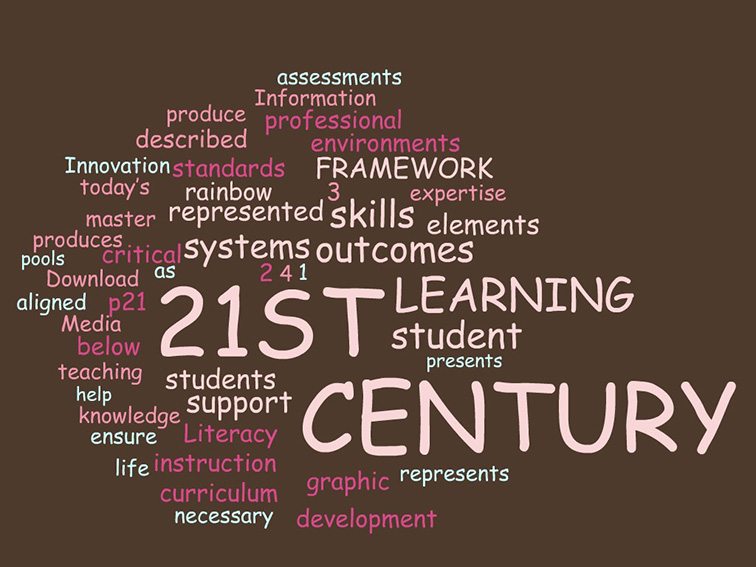 Learning Technology Is About Relationships
Learning Technology Is About Relationships
By Mike Fisher
What really matters in the 21st Century? Is it the ability to use a computer? Is it to successfully interact with digital landscapes and resources? Is it achieving Ender Dragon experience in Minecraft? Is it knowing the ins and outs of multiple devices and operating systems?
Or is its about connections and relationships?
It’s fascinating–but not surprising–that the Partnership for 21st Century Skills website is severely lacking in the use of the word “computer,” even the word “device.” On their main page describing their framework, the words “device,” “computer,” “application,” or “internet” are not used.
 This is a website devoted to what students need to know and be able to do in the 21st Century and computers and devices aren’t among the key words? Isn’t that interesting? What might this suggest about what’s really important nowadays?
This is a website devoted to what students need to know and be able to do in the 21st Century and computers and devices aren’t among the key words? Isn’t that interesting? What might this suggest about what’s really important nowadays?
Students are immersed in technology from birth. They use multiple devices and apps as seamlessly as they breathe. That’s not to say that they use them well or to their full capacities, but they’ve been brought up on a steady diet of connectivity and access and information overload.
Technology & The Brain
What they haven’t learned how to do effectively is solve problems. They haven’t learned how to work with others, navigate complicated social cues, and invite different perspectives for the sake of doing their best work. They haven’t learned, in general, how to creatively explore the depths of what is possible with devices, apps, and technology.
Some of that comes from knowledge of devices and apps, sure, but it also comes from building offline relationships too. Relationships, many times, created through technology.
The prefrontal cortex (the front part right behind the forehead) controls impulses, decisions, the weighing of consequences, stuff like that. It’s a part of the brain that isn’t fully developed until you’re in your mid-20’s. Studies have shown that teenagers exert the most mental energy in the back parts of the brain, where adults exert the most in the front. (Edmonds, 2008)
Understanding this is vital in the digital age we live in. There’s so much information available, so many opportunities to connect, and it’s having an impact on children’s brain development. The developing brain of a child is like an entertainment center that hasn’t been fully hooked up. There are loose wires, so that the speaker system isn’t working with the DVD player, which in turn hasn’t been formatted to work with Chromecast or Apple TV, and hasn’t yet connected to the wireless network and even the television doesn’t quite work yet. (Edmonds, 2008)
So how should we adjust our practice–in terms of instructional strategies, curriculum design, and content–in response? So that students can learn to evaluate and process information using brains that are in a state of flux?
And to do so in pursuit of meaningful relationships with other people and their ideas?
Conclusion
I write a lot. I write a lot for teachers about immersing learning in instructional technology and making connections to other students, classrooms, and schools around the world. While uncertain, I believe that technology and the rate at which it infiltrates our society will have more positive than negative impact as we head into the future. Social media will be a large part of that—how we connect and interact with each other will likely become more and more important, both socially and in the context of employment in the future.
But back to the brain. Balance is the key. If all of a student’s interactions with others are through a handheld device, or if they’re spending an awful lot of time playing games, then they are missing opportunities for face-to-face interactions, physical exploration, or even the potential joy of solitude.
Ideally a child’s prefrontal cortex will develop with that “balance” so that they can learn how to control impulses, make decisions (quickly), understand consequences, form judgments, be an evaluator, etc. This, in turn, will help them understand others and navigate a physical social landscape through a balance between face-to-face and social media interaction.
Technology is great, but it is not what defines us in the 21st Century. What will ultimately define us and what we do is our relationships and how we interact with each other offline. Technology is just a cool bonus.
Edmonds, Molly. “Are teenage brains really different from adult brains?.”HowStuffWorks. HowStuffWorks.com, 26 Aug. 2008. Web. 31 May 2014. <http://science.howstuffworks.com/life/teenage-brain1.htm>.
Michael Fisher is a former teacher who is now a full-time author, consultant, and instructional coach. He’s a member of both the ASCD Faculty and the Curriculum 21 Faculty and an active blogger who writes often for the Curriculum 21 Blog and ASCD’s EDge Social Network. His website is The Digigogy Collaborative and he can also be found on Twitter as @fisher1000.
Michael is the author of Digital Learning Strategies: How do I assign and assess 21st Century Work? and the co-author of Upgrade Your Curriculum: Practical Ways to Transform Units and Engage Students, both published by ASCD. He is also a contributing author to the Solution Tree series Contemporary Perspectives on Literacy; Tag Cloud via P21.org’s Framework Page using ABCYa! and flickeringbrad; Learning Technology Is About Relationships
